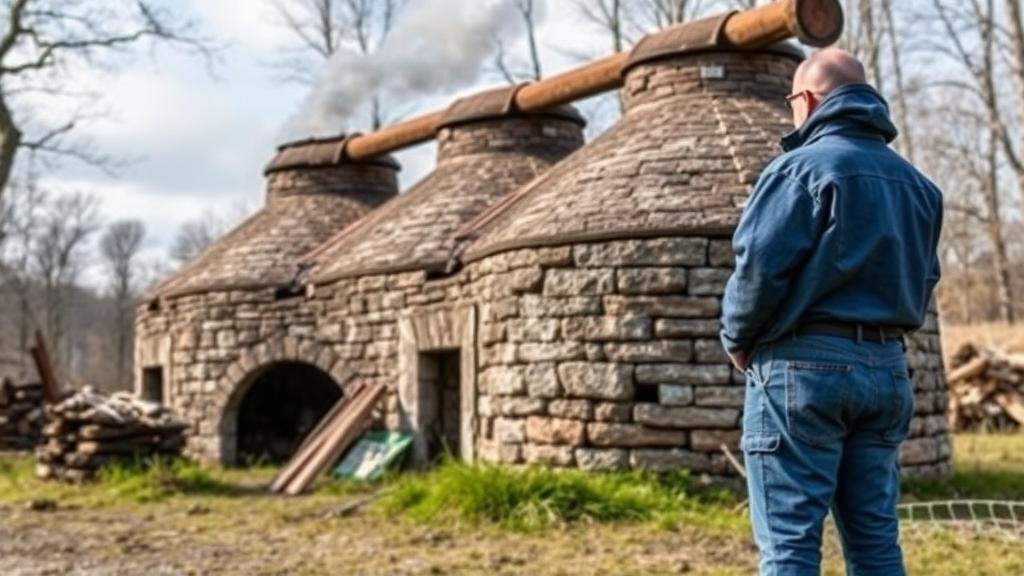How to Detect Near Historical Kilns or Smelting Sites for Industrial Relics
How to Detect Near Historical Kilns or Smelting Sites for Industrial Relics
The discovery of historical kilns and smelting sites holds significant archaeological and industrial importance, offering insights into the technological advancements and cultural practices of previous societies. The process of detecting these industrial relics involves a blend of historical research, fieldwork, and advanced technology. This article will outline the steps and methodologies employed in the detection of kilns and smelting sites.
Understanding Industrial Kilns and Smelting Sites
Before embarking on a detection project, its essential to understand what kilns and smelting sites are. A kiln is an oven used for hardening, roasting, or fusing materials such as clay or metal, often reaching high temperatures. Similarly, smelting sites are locations where metal ores are processed, typically involving the extraction of metals from their ores through heating and melting.
The historical significance of these sites stems from their role in the development of various industries, including pottery, metallurgy, and ceramic production. For example, evidence of ancient kilns has been found across the Mediterranean, highlighting the development of pottery techniques. Similarly, smelting sites from the Bronze Age, such as those discovered in Sardinia, reveal practices crucial to technological progress in metalworking.
Historical Research and Context
Detection efforts should begin with thorough historical research, which includes studying historical documents, maps, and archaeological reports. The following strategies are effective in identifying potential kiln and smelting site locations:
- Access Local Archives: Historical documents can provide vital information about industry concentrations in specific regions.
- Examine Topographical Maps: Many kilns and smelting sites are located near rivers or abundant raw materials, such as clay or ore deposits.
- Consult Archaeological Surveys: Reports from previous archaeological work can reveal the locations of known sites, informing future searches.
An example of successful historical research can be seen in the early 2000s excavation of an ancient pottery kiln in London, where historical texts were reviewed to determine the industrial activities prevalent in that area during Roman times.
Field Surveys and Surface Investigations
Once you have gathered historical context, the next step is to conduct field surveys. This process involves systematic examination of the landscape to identify ground indicators of historical industrial activity.
Key tactics in field surveys include:
- Surface Collection: Collecting fragments of pottery, slag, and kiln bricks can denote proximity to kilns or smelting sites.
- Soil Analysis: Testing soil composition can reveal the presence of specific minerals associated with industrial processes.
- Geophysical Surveys: Ground-penetrating radar (GPR) and magnetic susceptibility mapping can unveil buried structures without excavation.
A notable application of these methods occurred during the investigation of an antiquated ironworks site in Wales, where systematic surface collection and geophysical surveys led to the identification of several previously unrecorded smelting furnaces.
Utilizing Technological Aids
Advancements in technology have revolutionized the detection of industrial relics. Employing non-invasive techniques enhances both the speed and accuracy of detecting sites. Some of the technologies used in this context include:
- Remote Sensing: Satellite imagery and aerial photography can help recognize disturbances in the terrain indicative of anthropogenic activity.
- Drone Surveys: Drones equipped with high-resolution cameras can cover large areas efficiently, identifying sites that might otherwise remain unnoticed.
- 3D Modeling: Advanced software can create visual representations of identified structures, aiding in planning excavation and preservation efforts.
A practical illustration of this technology is seen in the use of drones in surveying ancient Roman iron smelting sites in Tunisia, where aerial imagery revealed patterns consistent with large-scale industrial activities.
Collaboration with Local Communities
Engaging local communities is a crucial part of detecting historical kilns and smelting sites. Local knowledge can provide insights that historical documents may not capture, including oral histories and traditional practices. Methods to foster collaboration include:
- Public Workshops: Organizing events to educate local residents about the importance of industrial archaeology can build community interest and involvement.
- Citizen Science Projects: Involving locals in field surveying efforts encourages participation and may lead to the discovery of unrecorded sites.
One successful case is the partnership between archaeologists and indigenous communities in the southwestern United States, leading to the identification of ancient pottery kilns and enhancing the understanding of historical cultural practices.
Conclusion and Actionable Takeaways
Detecting historical kilns and smelting sites requires a multidisciplinary approach that integrates historical research, fieldwork, technological advancements, and community collaboration. Here are actionable takeaways for those interested in undertaking this pursuit:
- Conduct thorough historical research to identify potential sites.
- Engage in systematic field surveys and surface investigations.
- Use modern technologies such as GPR, remote sensing, and drone surveys for efficient site detection.
- Collaborate with local communities to enrich the research process and uncover additional insights.
Identifying these industrial relics not only enriches our understanding of past civilizations but also serves to preserve the cultural heritage associated with these significant sites for future generations.



